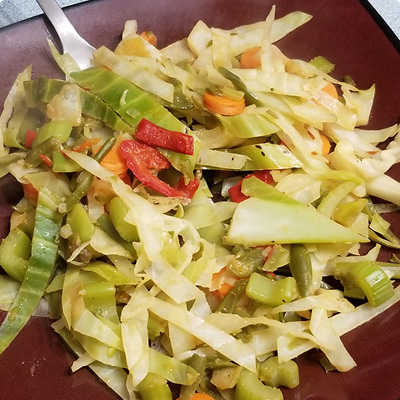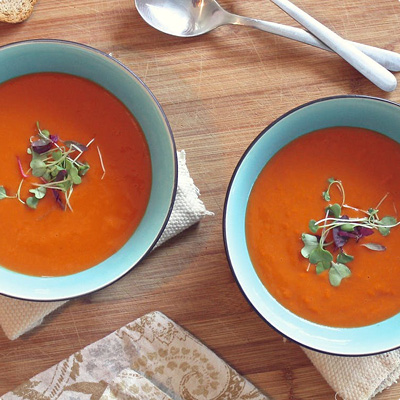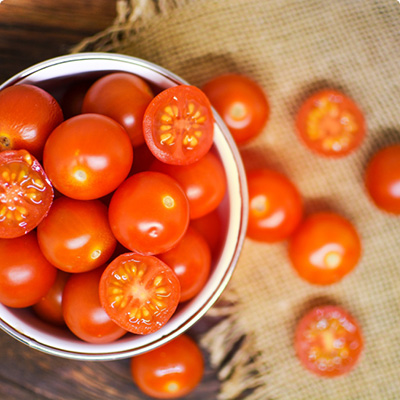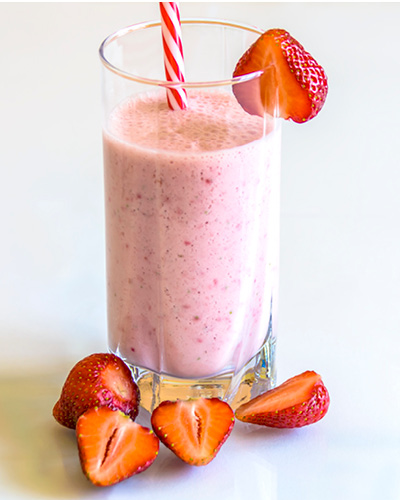My name is Eric and I eat over a lot of fruit and vegetables each day. The amount of fruit and veg I eat is a lot for anyone, especially someone who has an ileostomy like me.
‘I also love the taste of a good salad ’
For many ostomates, it can be more difficult to pass food through the digestive tract. This might be due to a shortened bowel, a poorly placed stoma or strictures or scarring caused by surgery. These issues are often health-related or mechanical in nature, and they can lead to a blockage hours after a meal. In my experience, it is unfortunately healthy, high-fiber foods that tend to cause these difficulties.
Why so much fruit and veg?
I am a vegan—which means I choose not to eat, wear or use any animal products—so naturally I gravitate towards things that grow, but I also love the taste of a good salad or fresh seasonal fruit. Not to mention that nutritionists advise it’s healthy for all adults to eat at least 8–10 servings of fruits and vegetables each day. Unfortunately, only one-in-ten American adults population eat the bare minimum, and we’re talking about people who don’t have an ostomy to consider!

As a vegan, the foods Eric eats are not always the easiest for ostomates to digest
Advice for ostomates
Patient literature for new ostomates often tells you what types of food to consume or avoid. These lists are often very specific and can be a practical guide, especially during the recovery period after surgery.
‘don’t be afraid to experiment and find what works for you’
However, every ostomate’s digestive tract is unique, and it is my experience that different foods effects individuals in different ways. Therefore, when you are ready, don’t be afraid to experiment and find what works for you.

Soups are unlikely to cause a blockage
Three magic rules
Following these three simple rules has kept me from developing a blockage.
1. Take it slow
When you begin to put bulky, fibre-rich foods back into your diet, you’ll want to take it slow until you learn your limits. This might mean physically chewing more methodically or starting with fewer options until you’re more comfortable. The idea is not to rush in; if you haven’t eaten a salad in months or years, you may want to wait before you have a large kale salad sprinkled with raw nuts.
2. Chew well
It’s more than likely that you remember your parents telling you to chew your food properly. This is actually a crucial step to being able to eat well with an ostomy. If you remember back to biology class, the cellulose in fruits and vegetables cannot be broken down in your stomach, so you’ll quickly realise that chewing is the only way to make sure that what you eat doesn’t go through you in large, undigested pieces.
3. Blast it, blend it, juice it
If you find that certain foods are still problematic, don’t be shy about overcooking your vegetables until they are very soft, blending then into a soup or turning your favourite fruits into a juice or smoothie. Processing food in these ways can help to break down or remove some of the fibres that can otherwise be difficult to pass through.

Teaching yourself to chew thoroughly can make all the difference
My experience
I have found that how my food is prepared and consumed is far more important than the specific types of food I choose to eat. It doesn’t really matter which foods I’m eating at any given time; if I’m careless with how I chew, then I’ll end up with a blockage regardless.
Therefore, over the course of 4 years, I’ve come up with a system that works well for me. It has enabled me to eat all the fruit and vegetables I like without running into blockages.
‘careless consumption is bound to lead to trouble’
Before I continue, I must stress that there is no one-size fits-all approach to stoma care. Before trying any significant adjustment in your diet, you should ask the advice of a health-care professional, who should have the opportunity to monitor any changes.
Always be careful of consuming more than your body can handle; overeating is very likely to cause a blockage, and careless consumption is bound to lead to trouble.
 Eric’s smooth recipes
Eric’s smooth recipes
Pink breakfast blend
• 1 ripe banana
• 150g red berries (any mix
of blackberries, blueberries, raspberries or strawberries)
• Water or apple juice
• Squeeze of clear honey
• Handful of ice cubes
Sunshine smoothie
• 1 ripe banana
• 1 medium mango
• 500ml orange juice
• Handful of ice cubes
Putting it all together
These three rules can be applied to any food type or meal of any size, but you may want to adapt them a way that is suited to your own dietary habits. However, remember that being able to eat what you like again doesn’t automatically guarantee optimal health, so I strongly suggest partnering with a registered dietitian who knows their way around the needs of an ostomate.
There’s no doubt that most of us are undereating fruits and vegetables, and an ostomy can sometimes discourage people from trying to eat healthily. Hopefully, using some of these tips will allow you to expand your menu and enjoy food the way you want to.
Sources
Centers for Disease Control and Prevention (2017) Only 1 in 10 adults get enough fruits or vegetables. www.cdc.gov
Health Canada (2008) How many food guide servings of vegetables and fruit do I need? www.canada.ca/en/health-canada
 Eric Polsinelli lives in Canada, where he blogs about life as a vegan and an ileostomate
Eric Polsinelli lives in Canada, where he blogs about life as a vegan and an ileostomate
www.veganostomy.ca
The contents of this page are property of MA Healthcare and should not be reused without permission

